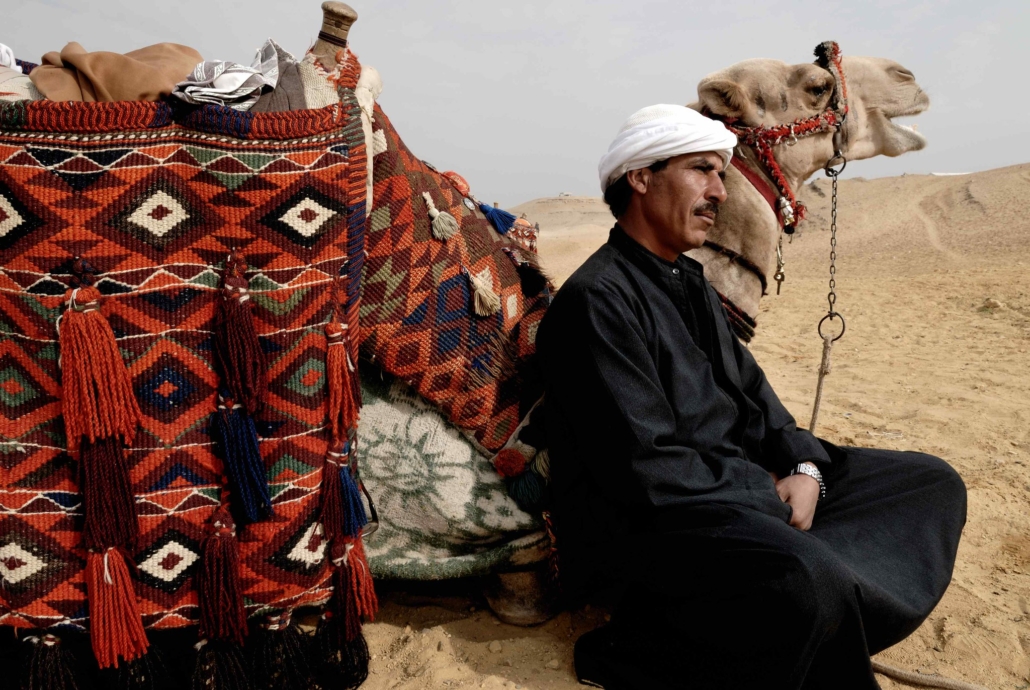Poverty in Upper Egypt
 A decade into Sisi’s reign, Egypt’s economy remains in decline. As the most populous Arab country with around 106 million people, the country continues to face significant economic challenges. In 2020, the World Bank estimated that nearly 30% of Egyptians were living in poverty, with millions more at risk of falling below the poverty line. The majority of the impoverished and vulnerable population is disproportionately concentrated in the rural governorates of Upper Egypt.
A decade into Sisi’s reign, Egypt’s economy remains in decline. As the most populous Arab country with around 106 million people, the country continues to face significant economic challenges. In 2020, the World Bank estimated that nearly 30% of Egyptians were living in poverty, with millions more at risk of falling below the poverty line. The majority of the impoverished and vulnerable population is disproportionately concentrated in the rural governorates of Upper Egypt.
Poverty in Upper Egypt
Also known as the “Sa’id,” Upper Egypt refers to the southern part of Egypt and the Nile River valley, extending from the area south of Cairo to Aswan. Despite its rich heritage of ancient Egyptian civilization, poverty in the region is prevalent, characterized by higher rates of unemployment, illiteracy, limited access to adequate health care and underdeveloped infrastructure. Although comprising only 25% of the population, it is home to 40% of the nation’s poor, totaling 12.6 million people. UNICEF findings reveal that a child in rural Upper Egypt is only half as likely to survive to the age of five compared to a child in Lower Egypt.
Access to clean and safe water is a challenge in Egypt and negatively impacts children. In areas without a piped water network, children, especially girls, are often tasked with fetching water, compromising their education and leisure time and further perpetuating the cycle of poverty.
Barriers to Education
Educational attainment in Upper Egypt has involved challenges; it is often difficult for children, particularly girls, to access schools. Families in this region often reside in small, rural hamlets, which are frequently located far from central village primary schools. Prevailing social influences and the lack of transport facilities has hindered children, especially young girls, from reaching these public schools. In Egypt as a whole, issues such as grade repetition, absenteeism and dropout rates reduce the efficiency of the education system. Consequently, approximately 46% of the working-age poor have not completed primary education, and less than 4% possess a university degree. Upper Egypt particularly shows lower intergenerational improvements in education than the remainder of the country, in 2015, approximately only 38.9% of those aged 25 years or older attained a higher level of education than their parents did.
Agricultural Challenges
In Upper Egypt, the governorates with the highest poverty rates see more than 30% of their workforce engaged in agriculture. The local economy relies heavily on subsistence agriculture, which, with unreliable weather conditions and changing weather patterns, is becoming increasingly unsustainable. Indeed, the country’s 1,000 poorest villages, located in three of these governorates, have 74% of households facing food insecurity. More than 55% of employment in Upper Egypt is agriculture related. Small farms, which fall short of international standards and which use traditional practices dominate this sector. Consequently, the region grapples with significant and persistent challenges, including food and water insecurity and climate variability, resulting in unsustainable livelihoods and hindering economic and social development.
The Ishraq Program
The Ishraq program focuses on out-of-school girls in Upper Egypt representing the most underprivileged, disadvantaged and often overlooked group in the country. When compared to their Lower Egypt and Urban governorate counterparts, they are at a much higher risk of early marriage, poor health outcomes and inter-generational poverty. Through the Ishraq program, Save the Children, in collaboration with the Population Council, provides safe spaces for girls who have dropped out of school helping them learn, socialize and develop life skills. “For more than a decade, Ishraq has served 3,321 girls and 1,775 boys in 54 villages across five of the most disadvantaged governorates of Upper Egypt,” according to the Population Council.
The program was met with high demand at the community level and resulted in improved literacy skills, financial management and health education. The program was launched in 2001 and a 2013 report by Population Council detailed plans to continue expanding the program, for which community demand remains high, and to encourage the development of further programs which support graduate girls as they become young women, who require greater life and livelihood opportunities.
Copts In Need
As a U.K. based charity dedicated to reducing extreme poverty in Upper Egypt, Copts In Need (CIN) undertakes various projects to help the poor communities of Upper Egypt, focusing on housing, child development and microfinance projects. In 2023, CIN constructed 200 houses in Upper Egypt and supported 800 members in starting their own businesses.
Another of their notable projects is ‘Eyes of Assiut’ which aims to address the high prevalence of visual impairment and blindness in the region, particularly among women. CIN has established an eye specialist hospital in the Abnoub district, providing treatment and training to local ophthalmologists and nurses, with support from highly qualified U.K. consultants. In the past year, the hospital has continued to be an effective referral and treating center for all Egyptians within Assiut and its peripheries.
Despite Upper Egypt’s rich cultural heritage, it remains one of the poorest and most underdeveloped regions in the country, exacerbated by ineffective government policies. However, initiatives by organizations like Save the Children and Copts In Need offer hope by focusing on education, health and sustainable development. For real progress, stronger government action and support are crucial to transform this region and improve the lives of its vulnerable populations.
– Asma Issa
Asma is based in London, UK and focuses on Politics and World News for The Borgen Project.
Photo: Flickr
